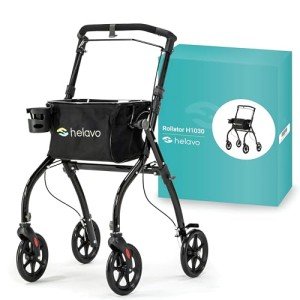What Is Stable Walker And How To Use What Is Stable Walker And How To Use
Exploring the Innovations of Stable Walker Technology
In the ever-evolving world of robotics and automation, the concept of a “stable walker” has actually emerged as a remarkable crossway of design, technology, and biomechanics. A stable walker refers to a robotic system capable of keeping balance and passing through various terrains, mimicing human-like movement. This post provides a thorough exploration of stable walkers, their elements, applications, and the technological advancements that continue to press the limits of what these makers can accomplish.
- * *
What Makes a Walker “Stable”?
At its core, stability in a robotic walker is defined by its ability to remain upright and browse a variety of surfaces without falling. Numerous factors add to a walker's stability:
- Center of Gravity: A lower center of mass usually enhances stability. Designers often position elements strategically to optimize this aspect.
- Sensing units: Advanced sensing units help the walker discover changes in the environment, enabling real-time changes to maintain balance.
- Actuators: These elements make it possible for motion and play a vital role in steady navigation.
- Algorithms: Sophisticated algorithms procedure sensor information and figure out the best movements, allowing adaptive walking.
- * *
Table 1: Key Components of Stable Walkers
Part
Function
Sensing units
Discover environmental conditions and assist in balance
Actuators
Propel movement in numerous directions
Control Systems
Incorporate sensing unit input to make real-time balance changes
Power Supply
Offer required energy for functions and motion
- * *
Applications of Stable Walkers
The applications of stable walkers are large and varied, spanning several fields. Below are some crucial areas where these innovations are making an effect:
Healthcare:
- Rehabilitation: Stable walkers can assist clients recovering from injuries or strokes by supplying support while they regain their mobility.
- Exoskeletons: Wearable robotic devices can aid people with mobility problems, enabling them to stroll again.
Search and Rescue Operations:
- Unmanned stable walkers can browse tough surfaces during search operations after natural catastrophes. They are important in reaching areas that are inaccessible to people or wheeled automobiles.
Elderly Assistance:
- Robotic walkers developed for the elderly can assist preserve independence by offering support for movement and navigation around the home.
Industrial Applications:
- In settings where heavy loads require to be transported, stable walkers can help workers by carrying items without the danger of losing balance.
- * *
Table 2: Applications of Stable Walkers
Application Area
Usage Case Description
Healthcare
Rehabilitation support and exoskeletons for mobility
Browse & & Rescue
Navigating disaster-struck locations for recovery operations
Elderly Assistance
Supporting mobility for elderly individuals
Industrial
Carrying heavy loads in complicated environments
- * *
Technological Advancements
Robotic walkers have advanced considerably over the previous few years due to improvements in numerous crucial areas:
- Sensor Technology: Enhanced sensors such as LiDAR, ultrasonic, and cams offer detailed environmental mapping, permitting walkers to make more educated decisions on the relocation.
- Artificial Intelligence (AI): AI and artificial intelligence algorithms help with better forecast models for motion, making it possible for robotic walkers to gain from their experiences and enhance gradually.
- Battery Life: The development of lighter, more effective battery technologies makes sure that stable walkers can operate longer with less regular recharging.
- Products Science: Innovations in products, such as lightweight composites, enhance the durability and performance of robotic walkers.
- * *
Obstacles Facing Stable Walkers
Despite the amazing advances in stable walker technology, numerous challenges remain. Some of these consist of:
- Complex Environments: Navigating unforeseeable terrains is still a substantial difficulty for the majority of walkers.
- Cost and Accessibility: Many advanced robotic walkers are expensive, restricting their ease of access to a broader audience.
User Adaptation: Training users to efficiently run or adjust to robotic walkers is important, particularly in health care applications.
- *
Regularly Asked Questions (FAQ)
1. Can stable walkers be used outdoors?Yes, numerous stable walkers are designed to operate in numerous outdoor conditions, with features to traverse unequal surface.
2. How do stable walkers differ from conventional wheelchairs?Stable walkers offer active support, enabling mobility and movement comparable to walking, whereas wheelchairs use seated assistance without making it possible for walking motion.
3. Are stable walkers safe for older adults?Yes, they can substantially enhance the safety of older adults by offering stability and reducing the threat of falls. Nevertheless, Indoor Walker need to be trained on their correct usage.
4. What is the future of stable walker technology?The future points towards more autonomous systems using advanced AI, allowing walkers to make decisions in real-time and adjust to user preferences and environments.
- * *
The exploration of stable walker technology uncovers a remarkable world loaded with potential. These advanced makers mix engineering, artificial intelligence, and human-centered design to deal with critical challenges in mobility and accessibility. With continuous advances set to additional refine their abilities, stable walkers represent a crucial innovation with the guarantee to transform how people move and communicate with their environments. Whether in health centers, catastrophe zones, or homes, the effect of stable walkers continues to grow, enriching lives and offering support in methods that were when believed difficult.
As innovations progress and the combination of AI and effective materials continues, the future of stable walkers seems not only promising however essential ahead of time human mobility and self-reliance.
